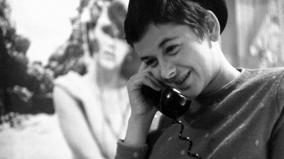Pierre Perrault (20)

Pierre Perrault
He made his cinematic debut with Au pays de Neufve-France, a series of 13 short documentaries for television, produced by Crawley Films. Pour la suite du monde (1962) (For Those Who Will Follow), co-directed with Michel Brault, was his first production for the NFB. This extraordinary film, which was selected for the official competition at Cannes, represents the culmination of the direct-cinema technique created at the NFB; its appearance also marks the moment when the French-language production team truly came into its own. Perrault made two more films about the people of Ile-aux-Coudres before turning his attention first to Acadia, then to Abitibi, where he directed four films about the aftereffects of the region's colonization 40 years before, during the Depression. After Abitibi he made two films on the Lower North Shore (Basse-Côte-Nord) about the Innu and their ancestral territory. His next project was his 1982 feature La bête lumineuse (The Shimmering Beast), which is one of the greatest achievements of his filmography; much more than just a documentary, the film focuses on a moose hunting party as a powerful metaphor for the masculine condition. Perrault's next three films were about the Saint Lawrence River and Jacques Cartier's voyages of exploration; they were followed by two documentaries shot on Ellesmere Island. Pierre Perrault was a path-breaker and an inspiration; his immense body of work is unique in our cinema history: poetic, metaphorical, and philosophical, his films are packed with epic, larger-than-life characters, and his themes are universal.



















